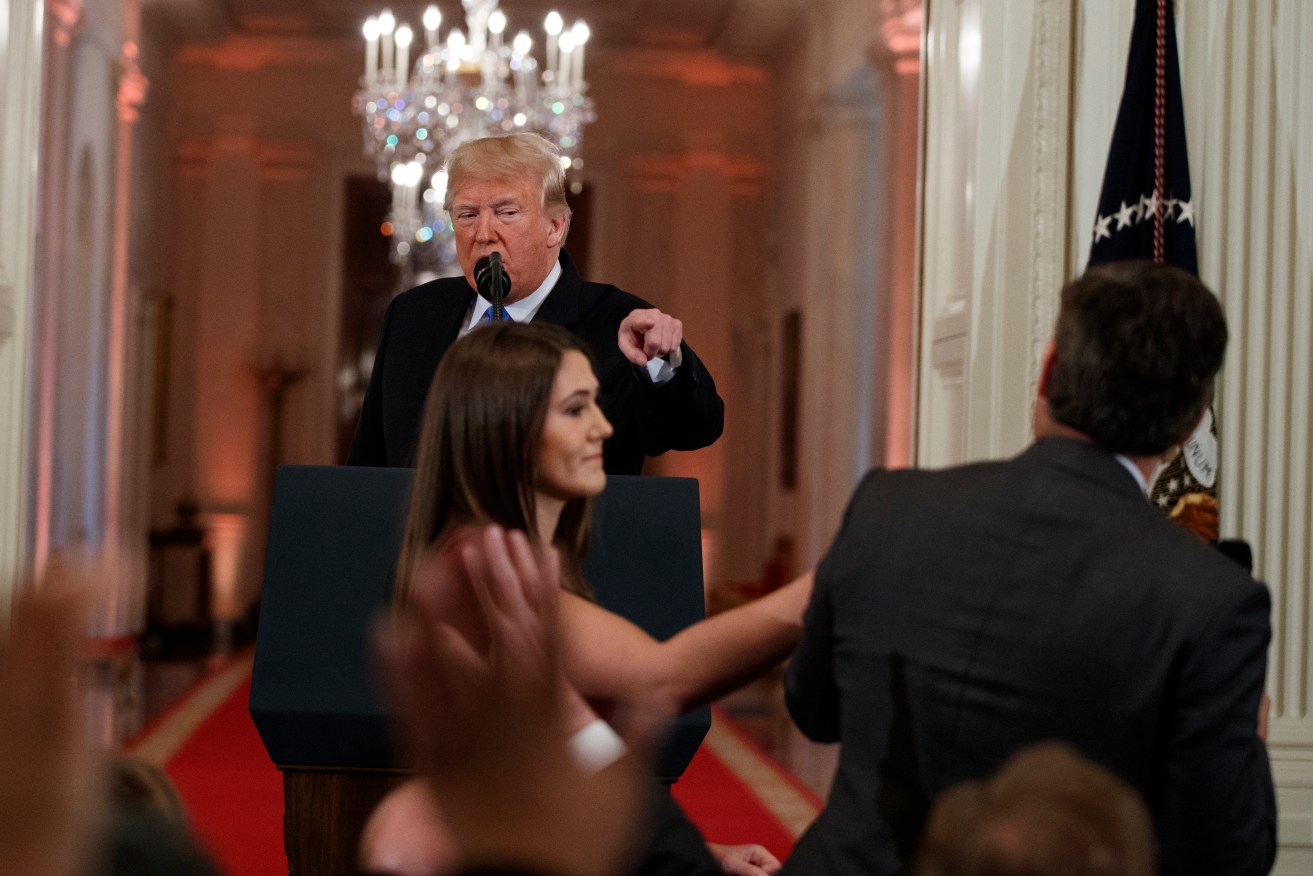White House distributed doctored video: expert
An independent expert has said a video distributed by the Trump administration to support its argument for banning CNN reporter Jim Acosta from the White House appears to have been doctored.

President Donald Trump looks on as a White House aide attempts to take away a microphone from CNN journalist Jim Acosta. Photo: AP/Evan Vucci
The doctored video makes Acosta look more aggressive than he was during an exchange with a White House intern.
White House press secretary Sarah Sanders tweeted the video, which shows Acosta asking a question to President Donald Trump on Wednesday as the intern tries to take his microphone away.
But a frame-by-frame comparison with a press video of the same incident shows that the one tweeted by Sanders appears to have been altered to speed up Acosta’s arm movement as he touches the intern’s arm, according to Abba Shapiro, an independent video producer who examined the footage.
Shapiro noticed that frames in the tweeted video were frozen to slow down the action, allowing it to run the same length as the press video.
The alteration is “too precise to be an accident,” said Shapiro, who trains instructors to use the software. The tweeted video also does not have any audio, which Shapiro said would make it easier to alter.
Sanders, who has not said where the tweeted video came from, said it clearly shows Acosta made contact with the intern.
We stand by our decision to revoke this individual’s hard pass. We will not tolerate the inappropriate behavior clearly documented in this video. pic.twitter.com/T8X1Ng912y
— Sarah Sanders (@PressSec) November 8, 2018
While the origin of the manipulated video is unclear, its distribution marked a new low for an administration that has been criticised for its willingness to mislead.
The White House News Photographers Association decried the sharing of the video.
“As visual journalists, we know that manipulating images is manipulating truth,” said Whitney Shefte, the association’s president.
CNN has labelled Sanders’ characterisation of Acosta’s exchange with the intern as a lie.
Its position has been supported by witnesses including Reuters White House correspondent Jeff Mason, who was next to Acosta during the news conference and tweeted that he did not see Acosta place his hands on the White House employee. Rather, he said he saw him holding on to the microphone as she reached for it.
Several journalists and organisations – including the American Society of News Editors, the Associated Press Media Editors and the Online News Association – demanded Acosta’s press pass be reinstated.
The New York Times editorialised in favour of restoring Acosta’s pass, saying it signalled Trump’s view that asking hard questions disqualifies reporters from attending briefings.
It’s unusual for the White House to pull the so-called hard passes from journalists.
Ari Fleischer, White House press secretary under George W. Bush, said on Fox News Channel Thursday that it appeared Acosta had made incidental contact with the intern and that it didn’t appear to be a justifiable reason to pull his pass.
– AP




